
Module 2:
Engaging with Your Community
As an advocate your goal is to help make a difference in your community by educating, inspiring, and guiding others to believe in your cause. By involving your community, you can create a network of people who can help share your efforts and recruit others to join as well as bring more awareness to the issue you are advocating for.
But what makes up a community? Who in the community can help?
What is a Community?
Communities: Communities come in various sizes, and each of us belongs to multiple communities.
Home: Your family forms your home community.
School: The school you attend represents your school community, which has its own layers: your classroom and your social community, including friends and those you enjoy spending time with.
Neighborhood: Your neighborhood is another community, which extends to your city, state, country.
Online: Finally, there is your online community, which connects to all communities virtually. For example, being a member of an organization like Say What! helps you connect with others across the state to learn about tobacco prevention and advocacy.
Communities
Home
School
Neighborhood
Online
You can also think of a community as:
- A group of people who live in the same place like your city.
- A group of people who have a certain characteristic in common such as your age.
- A group of people who share common attitudes, interests, and goals like a recycling club
whose members are dedicated to reducing trash and other waste.
Here are a few examples of other community groups you can talk to and recruit from:
Social Media
Your current and potential followers.
This group can include both youths and adults from all over the world. Having an online network brings together people who wouldn’t or couldn’t normally connect face to face.
Neighbors
People who live in the same area as you such as the neighborhood or apartment complex you live in.
The people who live in the same area as you may have examples of how the issue has affected their area, their family or themselves.
Community Group
Who Are They?
Why Are They Important?
Students at your school, teammates, youth who attend your church, or youth living near you. Your peer is someone who is about the same age as you.
They can attend your activities, help spread your messaging, and recruit other peers to join your cause.
Mayor, Council Members, Sheriff, parent groups, church groups, civic groups, local business owners. These people are the leaders of your community who have a lot of power and influence over what does or does not happen in your community.
These adults can work with you to help support your cause, set up meetings with policy makers, and connect you with the right person in your community.
Peers
Community Leaders
Now that we have covered what makes a community and the kinds of people you can connect and work with, the next step is knowing how to communicate your passion and goals about your advocacy work. The next lesson will cover an important step in how to communicate with your community.
Crafting Your Story Activity
Stories are a powerful tool for advocates as they put a face to a cause and humanize the work being done. People naturally think in stories, so sharing your “why” or purpose can help create an emotional connection for others. Those who are emotionally invested in an issue are more likely to dedicate their time and will make your issue a top priority.
A well-crafted story also helps your audience remember you and can serve as an effective form of persuasion when working on policy like passing a city ordinance that prevents smoking and vaping inside restaurants and other businesses. Advocating for a tobacco-free life should involve presenting facts and current laws to motivate action, but sharing your story will help you connect with individuals on a more personal level.
When telling your story, it's important to clearly communicate your purpose and how you would like that person to get involved. Use the tips below to craft your story.
Focus It
Point to the Positive
Craft It
Frame It
Practice It
Focus on your goal, your audience, and your message.
What is the positive change that is needed?
Edit, polish, and use language so that the person you are talking to will connect with you.
Be clear about your intentions and provide context.
Speaking authentically, comfortably, and effectively takes practice.
Here is a good example of a Say What! Teen Ambassador utilizing her "Why" story to communicate to the audience why she is invested in advocating for tobacco prevention within her community.
For more practice on crafting your story use the My Why activity sheet.
How to Engage with Your Community
Engaging with your community can be as easy as sharing information about a concern you have with others while at a park or it can be as complex as hosting a rally or march. Below is a list of activities you can do to help bring awareness to your cause. Some activities can be completed by yourself while other activities will require the help of others as well as time to plan out important details.
Activities You Can Do:
Presentations
Giving a speech or talk to a school club, city hall, or community group.
Individual Meetings
Setting a time to speak to a teacher, principal, or an elected official.
Rally or March
Rally - A mass meeting for the purpose of displaying support of a particular cause.
March - A demonstration that involves a group of people walking from an assembly point to designated location.
Signatures for Support
Collecting signatures or letters from groups or individuals supporting your advocacy work.
Working with Media
Sharing information regarding advocacy work/events through social media or your local news channels.
Presentations:
Individual Meetings
Rallies and Marches
Signatures for Support
Working with Media
Social Media
Presentations can be done alone, in pairs, or in groups. Regardless of the format, a presentation uses a voice or voices to advocate for a particular issue, with the goal of educating or motivating the audience for change. The Say What! program and Teen Ambassadors have developed several PowerPoint presentations about the health effects of using commercialized tobacco products, the dangers of vaping, the evolution of e-cigarettes, and so much more. You can download these presentations for free.
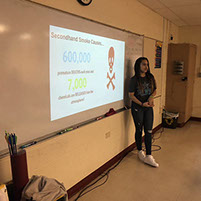
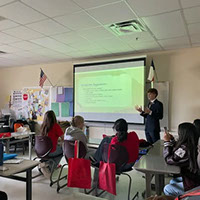
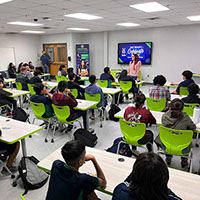
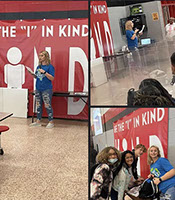
The purpose of meetings can vary depending on the goals of your advocacy work. Working with elected officials or community leaders may seem scary, but they truly enjoy hearing from youth advocates and learning about the topics they are passionate about. Young people can drive innovation in policy by injecting new ideas and solutions into the policy process. Through these meetings, advocates can address specific issues and propose changes. Download our free guides to help you plan successful meetings today!
This guide provides helpful tips for contacting or working with elected officials.
This guide provides important steps to help you develop a new relationship with your decision-makers.
This guide provides important steps to help you plan effective meetings.
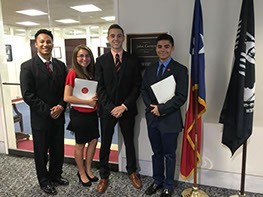
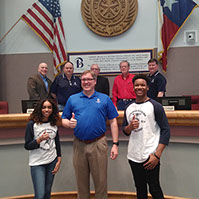
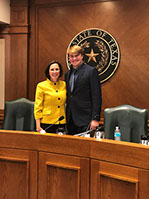
Rallies and marches are a great way to bring everyone together to show visibility to a specific cause. They are designed to be loud and energetic but also influential in making a change in your community. Whether influencing policy like a smoke-free indoor air ordinance, preventing additional vape shops from opening near schools, or bringing attention to the dangers of commercialized tobacco products, a rally or march can focus on the issue you feel is greatest in your community.
Before you start recruiting people, you’ll need to plan things out. You will need to think about when and where the rally or march will take place, how you will promote the event and how you will recruit volunteers just to name a few. Download the free Say What! Rally and March Planning Workbook to get started on your event today.
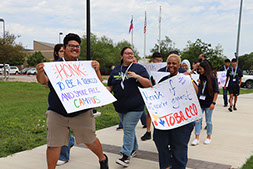
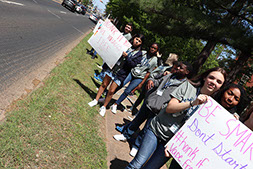
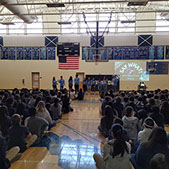
You can collect signatures or letters in different ways and at different events. For example, let's say you are hosting a Texas Tobacco-Free Kids Day event. You can collect signatures by asking your friends to sign a banner that says they will live a tobacco-free life. Another example might be that you want all the parks in your city to be tobacco-free. You can collect signatures or letters of support by reaching out to teachers, elected officials, and other community members to show your city’s decision makers that the community supports that type of change.
You can learn more about collecting signatures and building momentum in your school or community to create change by visiting Change.org.
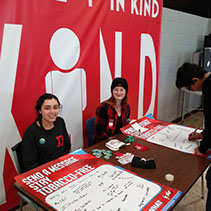
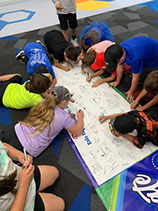
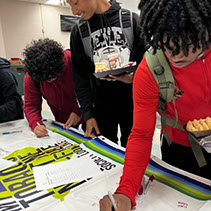
Think of working with both local and social media outlets as an opportunity to spread the word. Advocates for tobacco-free generation can use these platforms to ensure their messages reach diverse audiences, empowering others to make informed decisions and resist the pressures of tobacco use.
If you need help knowing how to approach your local media outlets, here are examples of what to say or how to start the process.
• Radio Interview – an on the radio interview to promote your advocacy efforts and help educate listeners.
• Letter to the Editor – a letter sent to the newspaper notifying them about current issues or concerns
to be published.
• Press Release – a summary or update used to alert the media about news and events that occurred.
• Media Advisory – is an invitation to the media for any upcoming events you would like them to attend.
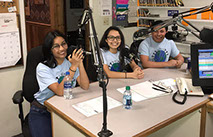
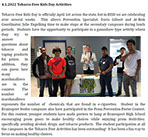
When it comes to increasing awareness about the dangers of tobacco and e-cigarette use and encouraging others to live a healthy, tobacco-free lifestyle, social media is the perfect tool!
Not only can you connect across the country, but advocates and youth leaders can play a critical role in communicating the importance of living vape-free and creating the first tobacco-free generation. Whether you are using Instagram, X, Facebook, or YouTube, the Say What! program offers several free resources to help you become a successful youth advocate online. Download the workbook to get started on your advocacy campaign today!
Look how advocates for a tobacco-free lifestyle have been using social media.
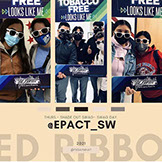
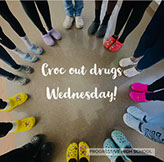
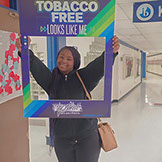
Training Module
Modules
Home
Say What! EST. 2011
Phone
512.245.8082
Mailing Address
Texas School Safety Center
ATTN: Say What Program
Texas State University
601 University Drive
San Marcos, TX 78666

Say What! was created and designed by young people from across Texas and connects students interested in eliminating tobacco from their schools and communities. The Say What! movement is funded by the Texas Department of State Health Services through a contract with the Texas School Safety Center at Texas State University.

